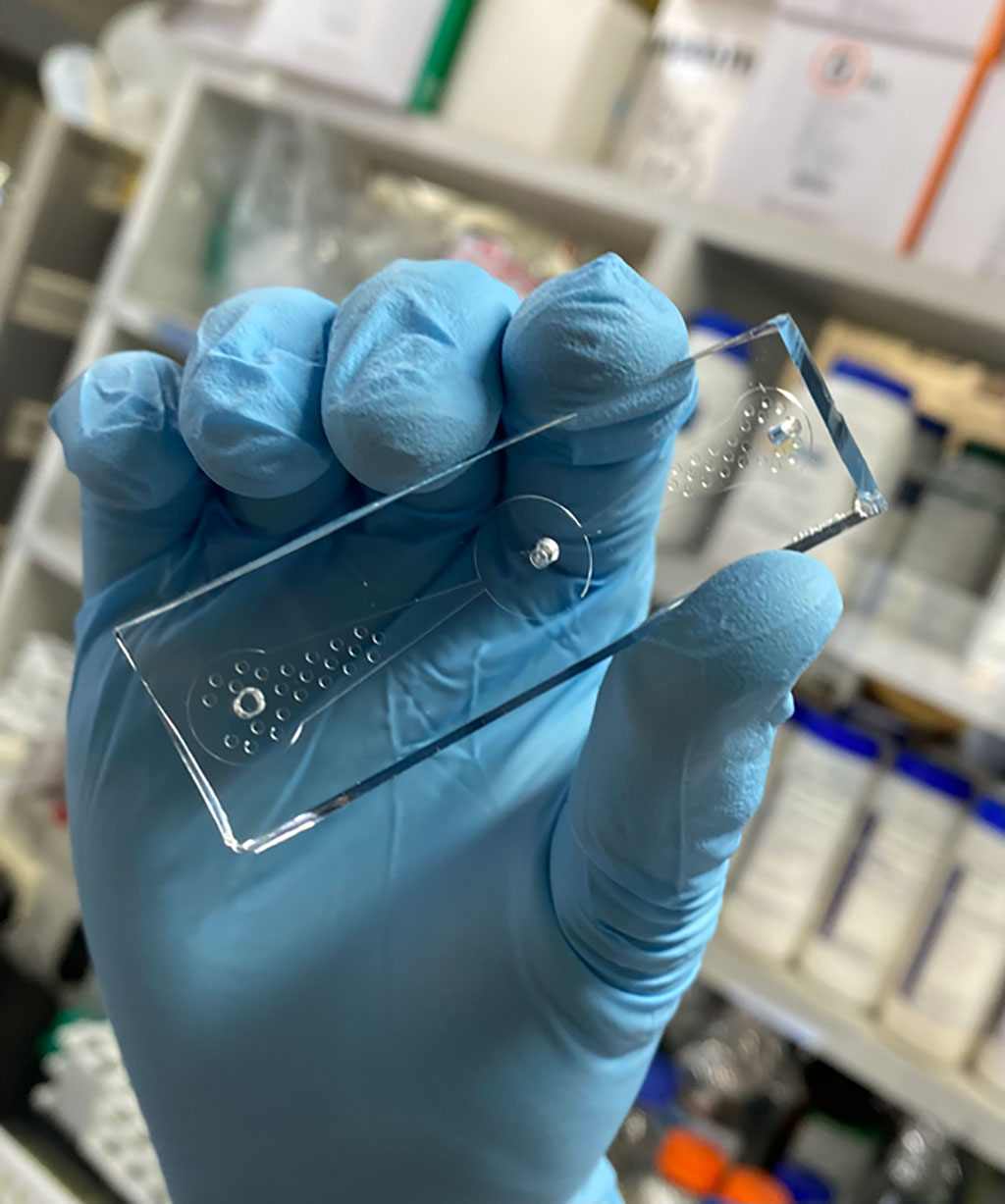Worm-on-a-Chip Device Could Noninvasively Diagnose Early-Stage Cancer
Posted on 22 Mar 2022
Dogs can use their incredible sense of smell to sniff out various forms of cancer in human breath, blood and urine samples. Similarly, in the lab a much simpler organism, the roundworm C. elegans, wriggles its way toward cancer cells by following an odor trail. Scientists have now reported a device that uses the tiny worms to detect lung cancer cells.
This “worm-on-a-chip” developed by researchers at the Myongji University (Seoul, Korea) could someday help doctors noninvasively diagnose cancer at an earlier stage. Early diagnosis of cancer is critical for effective treatment and survival. Therefore, cancer screening methods should be quick, easy, economical and noninvasive. Currently, doctors diagnose lung cancer by imaging tests or biopsies, but these methods often can’t detect tumors at their earliest stages. Although dogs can be trained to sniff out human cancer, they aren’t practical to keep in labs. So the researchers decided to use worms called nematodes, which are tiny (~1 mm in length), easy to grow in the lab and have an extraordinary sense of smell, to develop a noninvasive cancer diagnostic test.

Other researchers have placed nematodes in petri dishes and added drops of human urine, observing that the worms preferentially crawled toward urine samples from cancer patients. Jang and Choi wanted to make an accurate, easy-to-measure form of the test. The team at Myongji University made a chip out of polydimethylsiloxane elastomer that had a well at each end connected by channels to a central chamber. The researchers placed the chip on an agar plate. At one end of the chip, they added a drop of culture media from lung cancer cells, and at the other end, they added media from normal lung fibroblasts. They placed worms in the central chamber, and after an hour, they observed that more worms had crawled toward the lung cancer media than the normal media. In contrast, worms that had a mutated odor receptor gene called odr-3 did not show this preferential behavior.
Based on these tests, the researchers estimated that the device was about 70% effective at detecting cancer cells in diluted cell culture media. They hope to increase both the accuracy and sensitivity of the method by using worms that were previously exposed to cancer cell media and therefore have a “memory” of cancer-specific odor molecules. Once the team has optimized the worm-on-a-chip for detecting cultured lung cancer cells, they plan to move on to testing urine, saliva or even exhaled breath from people. They also plan to test the device on multiple forms of cancer. In other studies using the worm-on-a-chip, the researchers identified the specific odor molecules that attract C. elegans to lung cancer cells, including a volatile organic compound called 2-ethyl-1-hexanol, which has a floral scent.
“Lung cancer cells produce a different set of odor molecules than normal cells,” said Shin Sik Choi, Ph.D. at Myongji University who was the project’s principal investigator. “It’s well known that the soil-dwelling nematode, C. elegans, is attracted or repelled by certain odors, so we came up with an idea that the roundworm could be used to detect lung cancer.”
Related Links:
Myongji University














